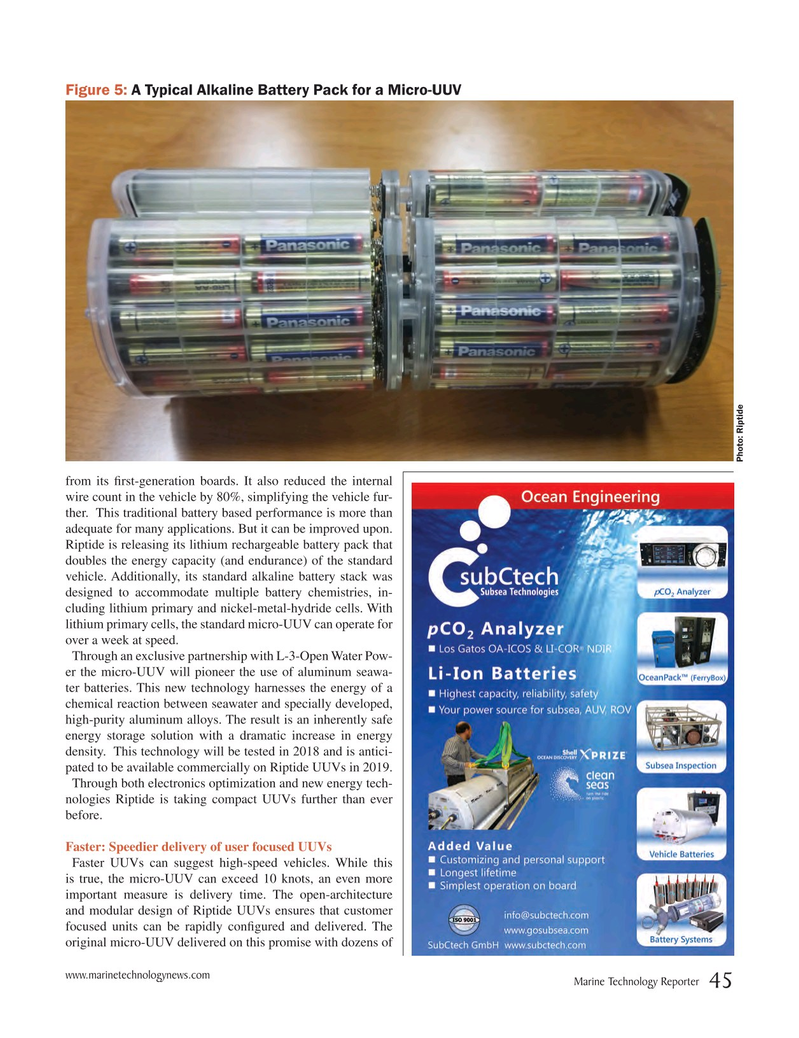
Page 45: of Marine Technology Magazine (June 2018)
Underwater Defense
Read this page in Pdf, Flash or Html5 edition of June 2018 Marine Technology Magazine
Figure 5: A Typical Alkaline Battery Pack for a Micro-UUV
Photo: Riptide from its ? rst-generation boards. It also reduced the internal wire count in the vehicle by 80%, simplifying the vehicle fur- ther. This traditional battery based performance is more than adequate for many applications. But it can be improved upon.
Riptide is releasing its lithium rechargeable battery pack that doubles the energy capacity (and endurance) of the standard vehicle. Additionally, its standard alkaline battery stack was designed to accommodate multiple battery chemistries, in- cluding lithium primary and nickel-metal-hydride cells. With lithium primary cells, the standard micro-UUV can operate for over a week at speed.
Through an exclusive partnership with L-3-Open Water Pow- er the micro-UUV will pioneer the use of aluminum seawa- ter batteries. This new technology harnesses the energy of a chemical reaction between seawater and specially developed, high-purity aluminum alloys. The result is an inherently safe energy storage solution with a dramatic increase in energy density. This technology will be tested in 2018 and is antici- pated to be available commercially on Riptide UUVs in 2019.
Through both electronics optimization and new energy tech- nologies Riptide is taking compact UUVs further than ever before.
Faster: Speedier delivery of user focused UUVs
Faster UUVs can suggest high-speed vehicles. While this is true, the micro-UUV can exceed 10 knots, an even more important measure is delivery time. The open-architecture and modular design of Riptide UUVs ensures that customer focused units can be rapidly con? gured and delivered. The original micro-UUV delivered on this promise with dozens of www.marinetechnologynews.com
Marine Technology Reporter 45
MTR #5 (34-49).indd 45 MTR #5 (34-49).indd 45 5/29/2018 10:29:50 AM5/29/2018 10:29:50 AM

 44
44

 46
46
